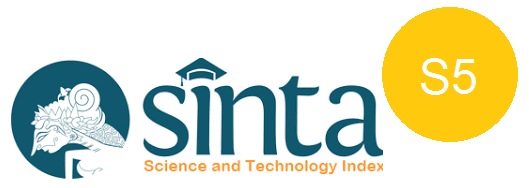THE IMPERATIVE SENTENCE IN DOLOKSANGGUL TOBA BATAK LANGUAGE
DOI:
https://doi.org/10.47313/pujangga.v2i2.389Abstract
ABSTRACT
The purpose of the research “The Imperative Sentence in Doloksanggul Toba Batak Language” is to find out the
kinds of the imperative sentence structure and the characteristics of the imperative sentence between Toba Batak
language in general and Toba Batak Doloksanggul. The theory is about kinds of sentence, especially imperative
sentence. The imperative sentence also be called as a command sentence. Besides as a command sentence,
imperative sentence also used to say request, prohibition that can be formed in a sentence. These sentences can be
found in every language such as in Indonesian, the language of the tribes as well as foreign languages. Every
language has characteristics itself, such as in Doloksanggul Toba Batak language in North Sumatera, Indonesia.
Batak language Doloksanggul has differences with the Batak language is generally. The characteristics of
imperative sentences in Doloksanggul Toba Batak language has differences. The differences can be found in the
structure, the using of particle, and the using of vocabularies. The descrptive analysis method was used in this
research. The analysis is taken from the interview for collecting the information. The result is the differences of
imperative sentence characteristics between Toba Batak language in general and Doloksanggul Batak Toba are
Keywords: types of imperative sentence, characteristics of imperative sentence,
Doloksanggul Toba Batak language.
References
Aikhenvald, Alexandra Y. 2014. “Commands: a cross-linguistics view”. Language and Culture
Research Centre, James Cook University. Retrived on February 20, 2016 from
https://research.jcu.edu.au/lcrc/steroom/commands.../position-paper.
Amelia, Kiki R. 2012. “Kesantunan Imperatif Bahasa Jepang Dalam Drama Tada Kimi Wo
Aishiteru”. Chi’e: Journal of Japanese Learning and Teaching. Chi’e 1
Beauman, S. 1988. Destiny. Toronto:Bantam Books.
Finch, Geoffrey. 2005. Key concept in Language and Linguistics. New York: Palgrave
Macmillan.
Isaraj, Merita. 2010. A Comparative Study of Imperative Sentences In English And Albanian
Language. Journal Practice And Theory In Systems of Education, Volume 5 Number 3,
Karepouwan, Vita. 2013. “Kalimat Imperatif dalam Novel The Kill Order Karya James
Dashner”. Jurnal Elektronik Fakultas Sastra Sam Ratulangi. Vol. 1, No. 1. Retrived on
April 21th, 2016 from www.ejournal.unsrat.ac.id.
Kridalaksana, Harimurti. 2008. Kamus Linguistik. Jakarta: PT Gramedia Pustaka Utama.
Loss, Eugene, et. al. 2004. Sentence. Glosarry of Linguistics Term. Retrived on January, 10th,
from www.sil.org/linguistics/Glosarry Of Linguistics Term/What Is A Sentence.
htm.
Postdam, Eric. 2003. “Syntactic Issues in the English Imperative”. Journal Glot International
Vol. 7, No. 1/2 January/February 2003
Radford, Andrew, et. al. 2009. Linguistics: An Introduction. Cambridge: Cambridge University
Press.
Rahardi, Kunjana R. 1999. “Imperatif dalam Bahasa Indonesia: Penanda-penanda Kesantunan
Linguistiknya”. Jurnal Humaniora Volume XI, No. 2. Retrieved on May 1st, 2016 from
www.jurnal-humaniora.fib.ugm.ac.id.
Sibarani, Robert. 1997. Sintaksis Bahasa Batak Toba. Medan: USU Press.









